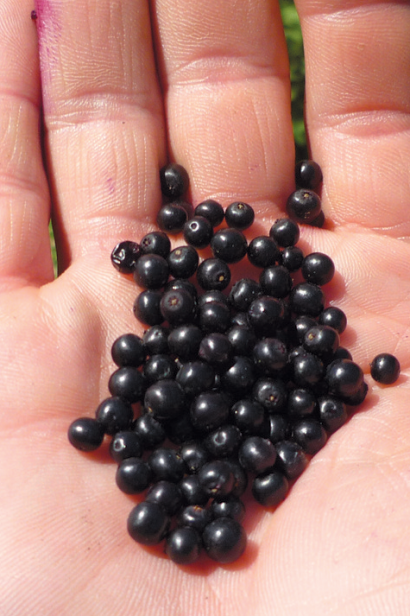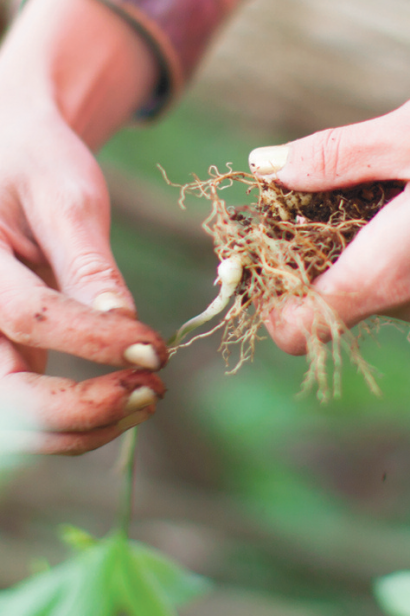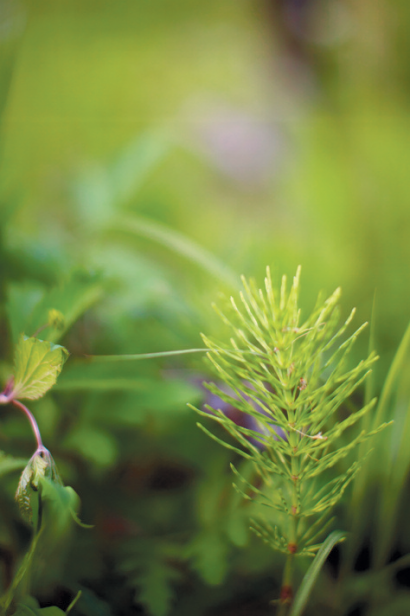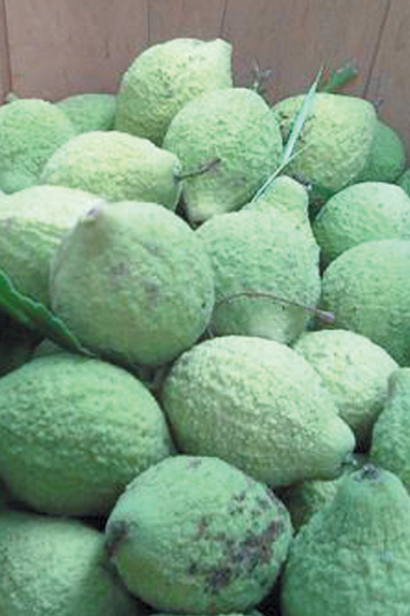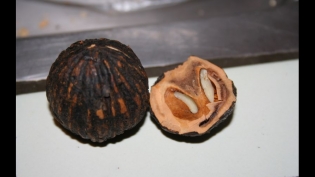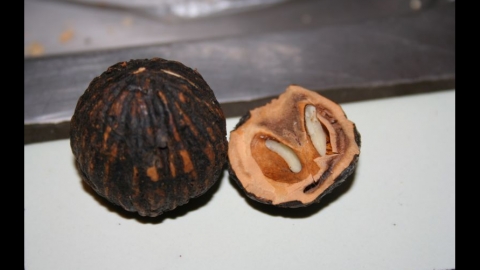Wild Things
At a time when more and more people are passionate about locally sourced food, gathering your own – whether from your yard, a neighborhood park or wilder places – ranks right up there with growing your own.
During high summer, wild brambles droop with berries, pawpaws fall in the woods and certain weeds run roughshod over a cultivated garden. Riotous abundance aside, those who know how to look can find food just about anywhere, even growing in the cracks of a sidewalk. It turns out that some people are so in touch with nature's offerings that the very ground beneath their feet can hold a smorgasbord.
Retiree Dan Anderson, a longtime Indiana Native Plant and Wildflower Society volunteer, puts it like this: "A lot of stuff, you walk on all the time and don't realize it's any good" to eat. The unruly corners of his own Castleton-area yard are the best places to find everything from mushrooms to berries to salad greens.
Foraging represents the ultimate in both local food and DIY ethos. In early spring, the Twittersphere is a-tweet with boasts of the firstfound ramps (wild leeks) and, on the culinary scene, people with a flair for finding and preparing wild foods are treated like rock stars.
More than Morels
For do-it-yourselfers, not only does foraged food have the bonus of being free, plucking young leaves from a basswood tree or sautéing a pan of wild-gathered daylily buds seems to feed more than a physical hunger. Herbalist Greg Monzel says that for him, foraging is an essential part of appreciating nature.
Near-Eastsider Monzel was just a boy when his dad and grandpa took him out searching for morels, now and then pointing out some other edible plant as an aside. At 12, he read the Euell Gibbons classic Stalking the Wild Asparagus and his eyes were opened. "I started with berries and moved on from there to 'trail nibbles' – things you can pick and eat on a hike," he says. As an adult he began to study the nutrition and sustenance side of foraging, along with his study of botany as an herbalist. Now, he searches out wild foods regularly – for their medicinal properties as well as edibility.
Meanwhile, young farmer Summer Cooper similarly started out berrying and mushrooming in the country, but her enthusiasm has carried her far since those days. Cooper began selling foraged foods at market alongside her Sunny Creek Farm produce last year, and found that many people were eager to try a taste. (Look for her cultivated and wild offerings at Carmel and Broad Ripple Farmers' Markets as well as the City Market this summer.)
"There's a whole world beyond blackberries and morels," she says. Hints of that world can be found on the menu of local establishments like The Libertine, The Local and Napolese Pizzeria. Shortseason items like ramps, redbud blooms, chanterelles and violets have all been featured at Napolese, where Chef Tyler Herald sometimes works his specials around Cooper's foraged items. In summer, he might offer a mulberry cobbler or a tossed salad augmented with wild raspberries.
"I try to use anything I can get my hands on and I love getting it fresh," he says. He appreciates foragers, saying, "I've hunted morels before and not been very successful – all I end up with is a couple hours walking in the woods. To me as a chef, I think it's really cool and I definitely want to support it."
The Need To Weed
Yet, as Anderson points out, you don't have to go too far to find forage-worthy plants. Cooper lives west of Indianapolis on her grandparents' farm, where there's plenty of acreage to explore, and she does. Still, just walking out her front door provides a bounty: "To my left is sheep sorrel, there's wood sorrel and of course there's dandelions all through my yard."
Every part of the dandelion is edible, in case you were wondering, and though the summertime flavors can run a tad bitter, leaves picked from a shaded plant might be less so. According to Monzel, who enjoys the ubiquitous dandelion all summer long, the blooms are rich in lecithin, which is brain food.
Hang around these folks for any length of time and you start to wonder if that irritating weed you're constantly pulling from your flowerbed might actually be tasty. Purslane, for example, is a common weed that Cooper pulls from the fields and saves for the dinner table (see sidebar).
Indeed, a number of delicious wild plants are invasive. In rural areas, wild mints and parsnips grow ferociously, causing grief for many a farmer. Cooper laughs, "I feel like a lot of the things I get excited about, other people find a nuisance."
Who hasn't cursed the mess left by an exuberant mulberry tree? But pick those berries and you've got a treat straight from untrammeled nature, free of charge.
In fact, fans of foraging consider wild edibles a great untapped resource in troubled times. Cooper says, "You don't have to spend a lot of money to eat well. Organic food has gotten really expensive and sometimes seems like something only the elite can afford. But you can go out and get all these nutritious foods for free in the wild."
A SUMMERTIME SMORGASBORD
Curious about the wild edibles out there? Here's a primer on what plants can be foraged in Central Indiana:
Berries. For guidance on edible plants, nothing beats a personalized tour. Greg Monzel's plant walks (monzelherbs.com) are popular initiations for the curious. (Monzel, who emphasizes that there are only seven plants in Indiana that can kill you, also recommends Bradford Angier's field guide.) But one easy way to start foraging on your own is to scout out brambles at the edge of woodsy areas. Blackberries and raspberries grow extensively in the right conditions, and while the fruit may be slightly smaller and more tart than commercial varieties, you can't beat the flavor burst – perhaps over ice cream or in a salad. Mulberries and serviceberries offer tremendous bounty; sweetness varies depending on the tree, so taste before you fill your bucket. Elderberries are sour but can be made into syrup, wine, jelly or pies. Fencerows and forests are a good place to look for this understory shrub; Monzel says he has seen elderberry clumps in Hamilton County "as large as your house."
Pawpaws. Also known as the "Indiana banana," pawpaws are our biggest native fruit – a creamy, delicious relative of the jackfruit.
The rich tropical flavor reminds Monzel of "vanilla-banana-mango custard," and he says the big seeds can be saved and made into jewelry. In late summer, look for pawpaw trees in forest clearings. Shaking the trunk will bring the barely ripe fruit tumbling.
Salad Greens. If you garden, you can do as Cooper does and save purslane when you pull weeds. Succulent and tender, "it's kind of like spinach but it grows in hot weather, when a lot of greens don't grow very well," she says. Young leaves of basswood or linden trees are among Monzel's favorite greens. The heart-shaped leaves have a mild flavor and are quite tender if picked when small.
Daylilies. Common daylilies grow prolifically along roadsides. Though some like to stir-fry them with other ingredients, Cooper likes the delicately flavored buds simply sautéed in olive oil with salt and pepper. Other uses include pickling, making fritters or drying and grinding as a cornstarch substitute. Open flowers can be stuffed like squash blossoms.



